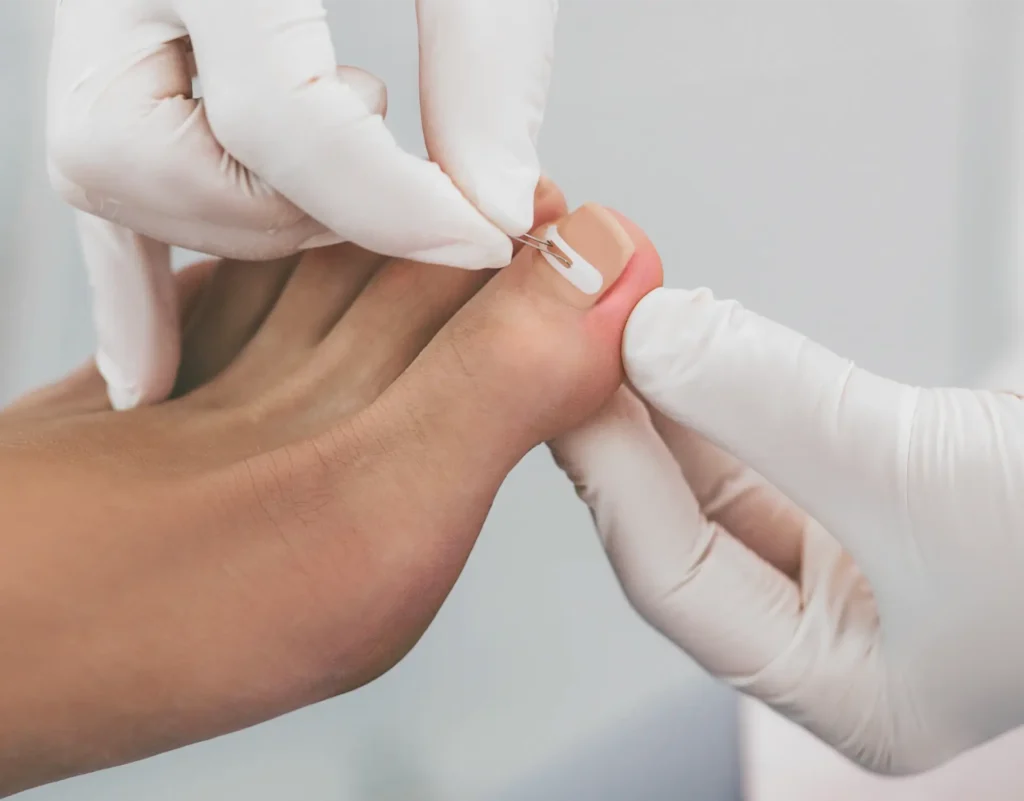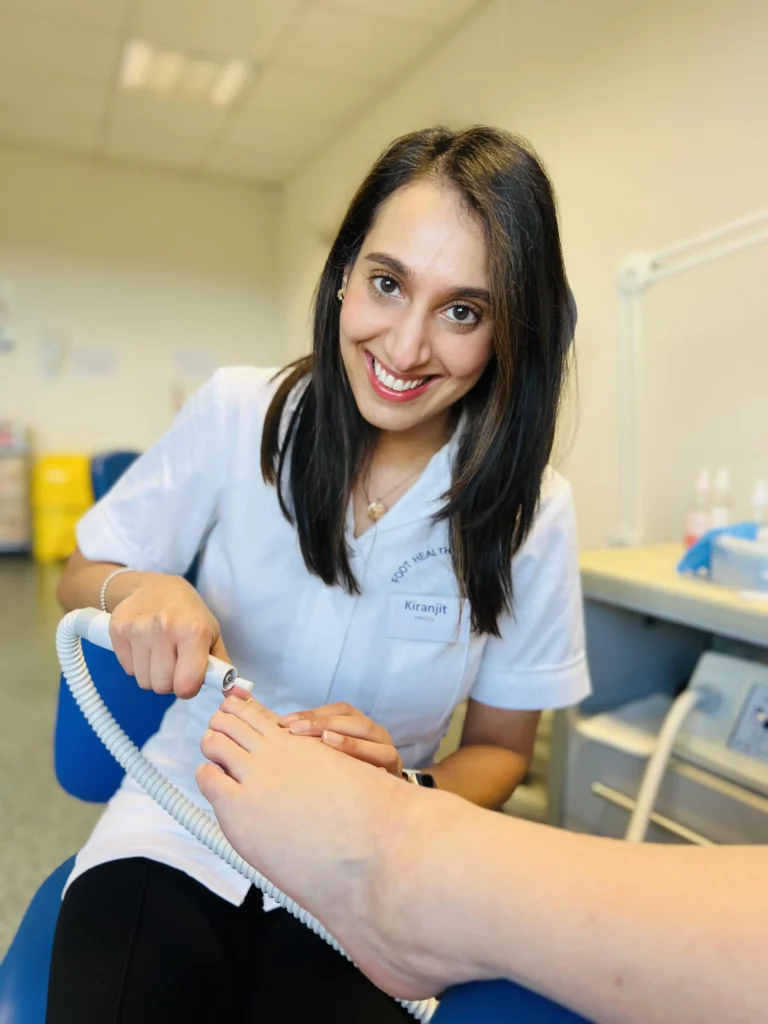Expert Toenail Treatment at our Stourbridge Clinic
Ingrown Toe Nails
Discover effective ingrown toe nail treatment at Cambrian Chiropody. Our experienced team provide expert care and effective solutions.
Ingrown toe nails (onychocryptosis) are very common, they can be caused by a variety of reasons such as, trauma to the nail plate, incorrect cutting of nails or poor/tight footwear. They can be extremely painful, whereby even the bed sheet lying on top of the toe can be painful. Ingrown toenails can lead to patients observing bleeding in socks, discharge around the toe and infection on one side of the toe, or in some case both sides of the toe.
- Nails that grow into the surrounding skin
- Treated through nail trimming, removal of nail spike or minor surgical procedures know as partial or total nail avulsion. Can be made permanent by using the chemical phenol to prevent the nail regrowing again.

Specialised Care for Nail Conditions in Stourbridge


Specialist Service
Nail Reconstruction
Have you got disfigured, fungal, broken or damaged nails??
Then, we can help. We can offer an innovative nail reconstruction service that can help repair you nails so they look like normal, healthy nails.
The product we use is called LCN – wilde pedique. The procedure involves carrying out a routine chiropody treatment, then applying the LCN product (thick gel lacquer) on the affected areas of nail. A UV light is then applied over he gel to harden it. The gel can then be sculpted and shaped to blend in to your normal nail
What to Expect from Ingrown Toenail Treatment
Professional ingrown toenail treatment begins with a comprehensive assessment to confirm the cause, severity, and best course of action. Your podiatrist will:
1. Discuss symptoms and medical history to understand your condition.
2. Examine the toenail and surrounding skin for signs of infection, swelling, or inflammation.
3. Recommend treatment options based on the severity:
- Mild cases – Gentle nail trimming, reshaping, and pressure relief, along with home care advice to prevent recurrence.
- Moderate to severe or recurrent cases – A minor procedure under local anaesthetic to remove part or all of the affected nail edge. In some cases, a chemical treatment is applied to prevent the ingrown section from regrowing.
4. Post-treatment care – The treated area is cleaned, dressed, and aftercare instructions are provided to aid healing and reduce the risk of recurrence.
Most patients experience immediate pain relief and a faster return to normal activities after treatment.


Why Choose Cambrian Chiropody for Ingrown Toenail Care
At Cambrian Chiropody, we provide expert, gentle, and patient-focused treatment for ingrown toenails. Our approach includes:
- Highly qualified podiatrists with specialist training in toenail surgery and conservative care
- Precise, minimally invasive techniques to relieve pain quickly and effectively
- High standards of infection control, with sterile instruments and a clinically clean environment
- Personalised aftercare guidance to support healing and prevent future problems
- A welcoming, professional clinic with a strong local reputation for trust, expertise, and excellent results
We are committed to helping you walk comfortably and confidently, with your foot health as our top priority.
Meet the Team of Experts
See why patients love Cambrian Chiropody
Fantastic service from start to finish, both the customer service and work done for me. Got me booked in fast and it was pretty much painless at a great price!
I could feel the difference immediately after. Thank you!!!
I feel very confident with the way Gavin works and would recommend him to anyone

Ingrown Toenail FAQs
Common symptoms of an infected ingrown toenail include:
- Pain and tenderness around the nail
- Redness, swelling, and inflammation of the surrounding skin
- Difficulty walking or performing daily activities
- Increased pain when wearing tight or restrictive footwear
- The nail edge digging into the skin, sometimes causing bleeding
- Signs of infection such as pus, discharge, or foul odour
If you notice these symptoms, it’s important to seek professional podiatry treatment to prevent the infection from worsening.
Yes. In many cases, ingrown toenails can be treated without surgery. At our clinic, we use specialist techniques—what we like to call our “Jedi skills”—and fine precision nippers to gently remove the ingrown section of nail. This method is often virtually painless, and many patients do not feel discomfort during the process. Non-surgical treatment is most effective for mild to moderate ingrown toenails without severe infection.
The only part of ingrown toenail surgery that may cause discomfort is the local anaesthetic injection, which patients describe as a brief 7/10 on the pain scale. This sensation lasts only a few seconds while the toe is being numbed. Once the anaesthetic takes effect, the procedure itself is completely pain-free, and we can remove the ingrown nail permanently without causing further discomfort.
Recovery from ingrown toenail surgery typically takes around six weeks. After the procedure, we recommend daily saltwater foot baths to keep the area clean and promote healing. Most patients can return to normal daily activities immediately, although certain sports and high-impact activities should be avoided until the toe has fully healed.
















